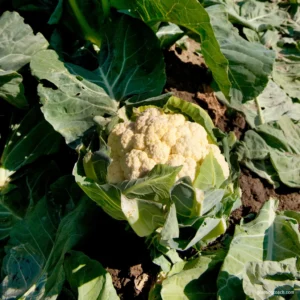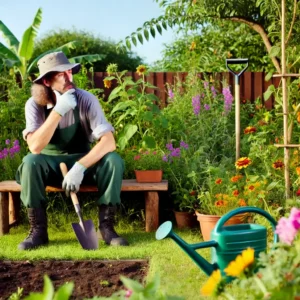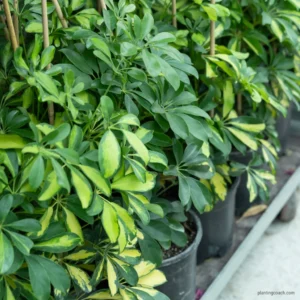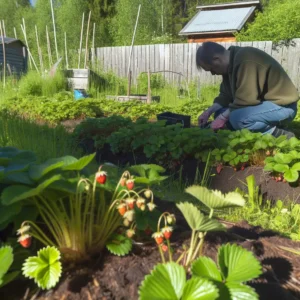In modern gardening circles, raised garden beds have emerged as a popular solution. They are famous for their numerous benefits, including improved soil drainage, efficient space utilization, and ease of access. These elevated plots offer a valuable alternative to traditional in-ground gardening, attracting beginner and seasoned gardeners with promises of higher yields and reduced maintenance. However, amid the widespread praise and enthusiasm for raised beds, it’s imperative to examine their potential drawbacks subtly.
While they undoubtedly offer advantages, raised beds also present challenges that can impact their effectiveness and sustainability over time. Navigating the complexities of raised bed gardening requires careful consideration and informed decision-making. So, if you’re thinking about starting a raised bed garden, you should know beforehand What Are the Disadvantages of Raised Beds? This article aims to address these drawbacks, so gardeners can make more informed choices that align with their goals, preferences, and constraints, ensuring a rewarding and fruitful gardening experience in the long run.
What Are the Disadvantages of Raised Beds?
Exploring the drawbacks of raised garden beds unveils a subtle perspective essential for informed gardening decisions. While these beds offer undeniable benefits, including improved drainage and pest control, they aren’t without their limitations. Understanding these drawbacks is crucial for aspiring gardeners aiming to cultivate growing green spaces. Challenges such as initial cost considerations, limited root space, and drainage issues necessitate careful planning and strategic solutions.
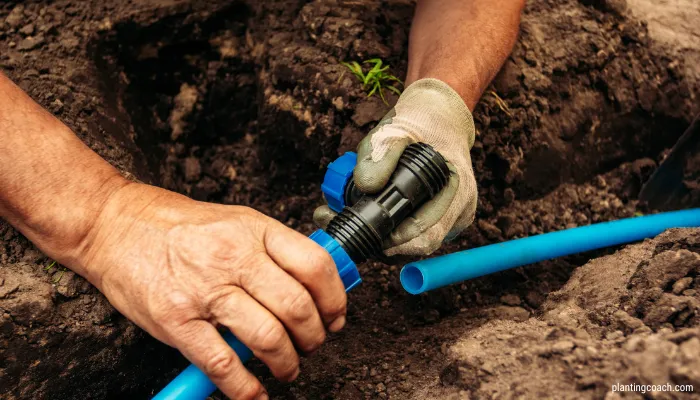
Moreover, maintaining soil quality, managing nutrient levels, and addressing susceptibility to pests and diseases are ongoing tasks demanding attention and expertise. Furthermore, accessibility concerns and regular maintenance requirements underscore the need for thoughtful design and inclusive practices. By looking into the complexities of raised bed gardening, enthusiasts can navigate these challenges effectively, ensuring a balanced approach that maximizes benefits while reducing drawbacks, ultimately leading to successful and fulfilling gardening experiences.
Cost Considerations
While raised garden beds offer many benefits, their initial cost can present a significant barrier for many aspiring gardeners. The price tag associated with constructing raised beds can vary widely depending on factors such as size, materials, and design complexity. Quality lumber, stone, or composite materials, often recommended for longevity and attractive appeal, can come with a significant price premium, particularly for more extensive beds or custom designs. Moreover, the expenses don’t stop at construction; ongoing costs for soil replenishment, amendments, and maintenance should also be factored into the equation.

While raised beds can be cost-effective in the long run, producing higher crops and reducing water usage and weed proliferation, the upfront investment can be hectic for those on a tight budget. However, cost-saving strategies such as sourcing reclaimed or repurposed materials, opting for DIY construction, or starting small and gradually expanding can help lessen financial constraints while still enjoying the benefits of raised bed gardening.
Limited Root Space
A fundamental aspect of raised bed gardening is its contained environment, which, while advantageous in many respects, can pose challenges regarding root space. Unlike traditional in-ground plots, where plants can extend their roots freely into the soil, raised beds restrict root growth to the confines of the bed. This limitation can be particularly problematic for deep-rooted plants like tomatoes, carrots, or potatoes, which may struggle to grow in the shallow soil depth typical of raised beds. As roots compete for limited space, they may become root-bound, leading to weak growth, nutrient deficiencies, and decreased productivity.

To address this issue, gardeners can employ various strategies, such as selecting shallow-rooted plant varieties, incorporating deeper soil layers or root barriers, and practicing regular root trimming to encourage healthier root development. By understanding and addressing the limitations of root space in raised beds, gardeners can optimize their growing environment and maximize the potential of their plants.
Drainage and Watering Challenges
While raised garden beds are often praised for their improved drainage compared to traditional garden plots, they can also present unique challenges in water management. Poorly designed or improperly constructed raised beds may suffer from uneven water distribution, leading to waterlogging in some areas and drought stress in others. This imbalance can result from factors such as bed orientation, soil composition, and the presence of compacted layers or drainage obstacles.

To mitigate drainage issues, it’s essential to ensure adequate drainage holes in the bed’s base to facilitate water runoff and prevent waterlogging. Additionally, using a well-draining soil mix composed of materials such as compost, perlite, or vermiculite can help promote better water infiltration and distribution throughout the bed. Implementing efficient watering practices, such as drip irrigation or soaker hoses, can further improve water efficiency and minimize water waste. Regular monitoring of soil moisture levels and adjustments to watering frequency and duration based on weather conditions and plant needs are essential for maintaining optimal moisture balance in raised beds.
Soil Quality and Nutrient Management
Maintaining soil fertility and health is paramount in raised bed gardening, given the confined growing environment and limited natural soil replenishment. Over time, the soil in raised beds may become compacted, devoid of nutrients, and imbalanced in pH levels, posing challenges to plant growth and productivity. To address these issues, gardeners should prioritize soil testing and amendments to ensure optimal soil quality and nutrient availability. Incorporating organic matter, such as compost, aged manure, or leaf mold, into the soil can help improve its structure, water retention, and nutrient content.

Additionally, applying balanced organic fertilizers or soil amendments rich in essential nutrients like nitrogen, phosphorus, and potassium can replenish soil fertility and support healthy plant growth. Regular soil aeration, mulching, and crop rotation practices can further improve soil health and toughness, reducing the risk of nutrient deficiencies, soil-borne diseases, and pest infestations in raised beds.
Vulnerability to Pests and Diseases
While raised garden beds offer some degree of protection against ground-dwelling pests and diseases, they can also be more vulnerable to certain above-ground pests and diseases compared to traditional garden plots. Elevated plantings may attract pests such as aphids, caterpillars, and snails, which can cause damage to crops if left unchecked. Additionally, the confined space and warm, moist environment of raised beds can create favorable conditions for soil-borne diseases such as damping-off, root rot, and fungal infections.

To reduce these risks, gardeners should implement integrated pest management strategies, such as companion planting, crop rotation, and natural pest predators, to block pests and reduce reliance on chemical pesticides. Practicing good sanitation, such as removing diseased plant material and regularly cleaning and disinfecting tools and containers, can help prevent the spread of pests and diseases in raised beds. Additionally, selecting disease-resistant plant varieties and maintaining optimal growing conditions, such as proper spacing, adequate airflow, and soil drainage, can help minimize the risk of pest and disease problems in raised bed gardens.
Maintenance and Accessibility
Despite their many benefits, raised garden beds require regular maintenance to ensure optimal performance and longevity. Weeding is a necessary task to prevent unwanted plants from competing with your crops for nutrients and space. Mulching can help suppress weeds, retain soil moisture, and regulate soil temperature, reducing the need for frequent watering and minimizing soil erosion. Structural upkeep is essential to prevent eventual collapse and ensure the stability of the raised bed framework over time. Regular inspection for signs of wear, such as rotting wood or loose joints, is recommended, along with timely repairs or replacements as needed.

Accessibility is another consideration, especially for gardeners with mobility issues or physical limitations. Raised beds should be designed with more comprehensive pathways and lower heights to accommodate wheelchair access and facilitate comfortable reaching and harvesting. Incorporating raised garden tables or vertical gardening structures can further increase accessibility and convenience for gardeners of all abilities. By prioritizing maintenance and accessibility in raised bed design and management, gardeners can create an enjoyable and inclusive gardening experience for themselves and others.
Summary
While raised garden beds offer numerous advantages, it’s essential to acknowledge and address their potential drawbacks to ensure a successful gardening experience. They require careful planning and continuous attention, which require implementing strategies to mitigate the disadvantages and maximize their benefits. Whether you’re a new gardener looking to start small or a seasoned enthusiast seeking to optimize your growing space, with thoughtful planning, proper maintenance, and a commitment to accessibility, you can have a rewarding experience along with sustainable practices through raised bed gardening.
FAQ
Q1: Are raised beds suitable for all types of plants?
While raised beds can accommodate a wide range of plants, some may fare better than others due to their root depth and spacing requirements. Consider selecting plants that are well-suited to the dimensions and growing conditions of your raised beds.
Q2: How long do raised beds typically last?
The lifespan of raised beds depends on various factors, such as the quality of materials used, maintenance practices, and environmental conditions. Well-built raised beds constructed from durable materials such as cedar or composite lumber can last for many years with proper care.
Q3: Can I convert an existing raised bed to address its disadvantages?
Yes, existing raised beds can be modified or improved to mitigate their drawbacks. Consider adding amendments to improve soil quality, installing drainage solutions, or adjusting bed height for better accessibility.
Q4: Are there alternative gardening methods that mitigate these drawbacks?
Yes, alternative gardening methods such as container gardening, lasagna gardening, or traditional in-ground planting may offer solutions to some drawbacks associated with raised beds. Experimenting with different strategies can help you find the best approach for your gardening style and preferences.
Q5: What are some cost-effective ways to build and maintain raised beds?
To reduce costs, consider using salvaged or repurposed materials, such as reclaimed lumber or recycled plastic, to construct raised beds. Additionally, practicing sustainable gardening techniques such as composting and mulching can help minimize ongoing soil amendments and maintenance expenses.



